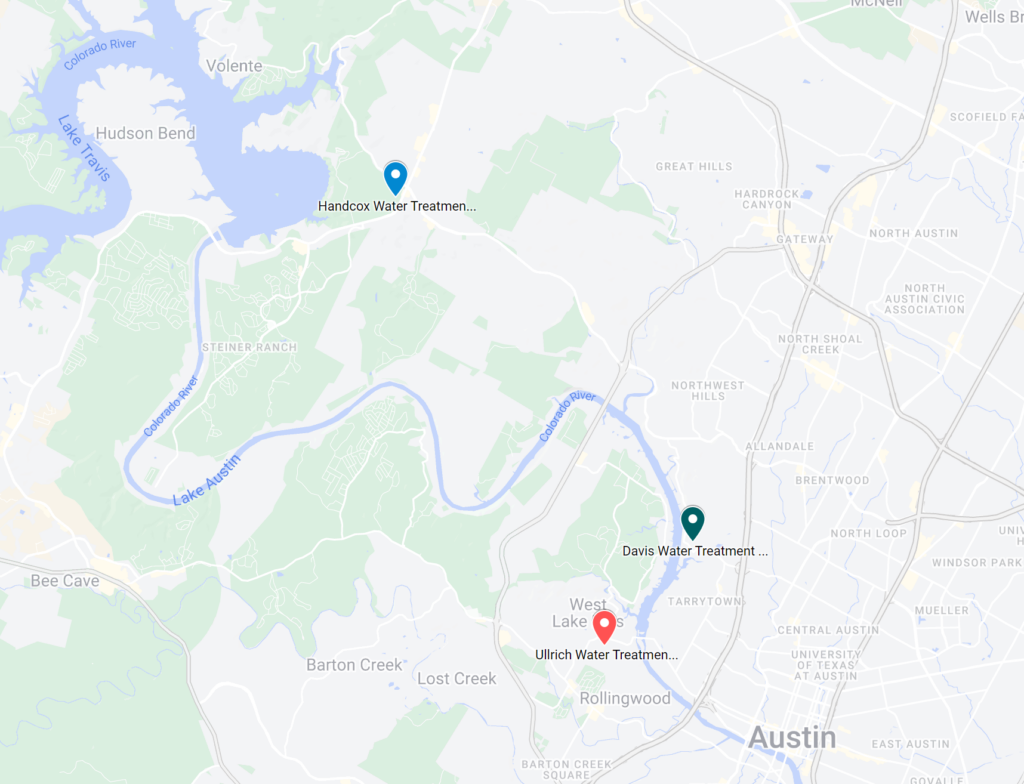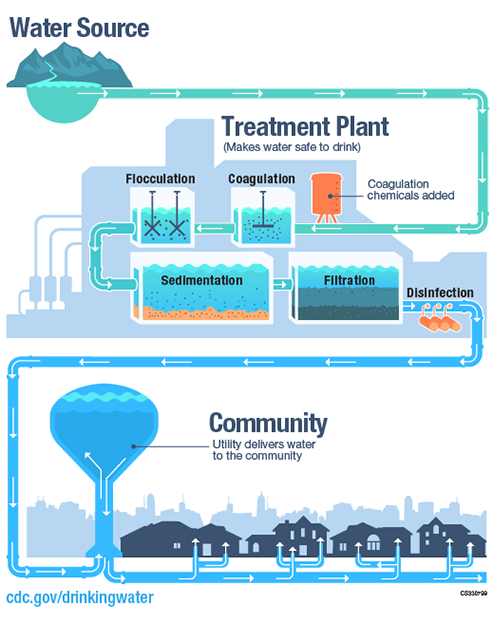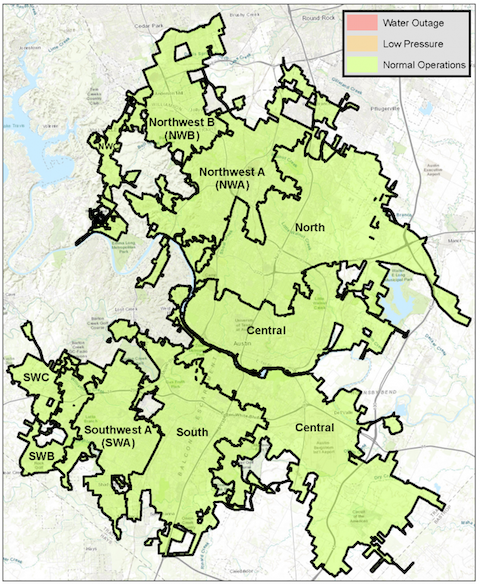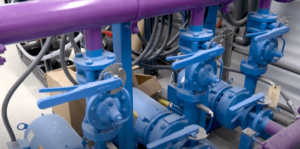The Ins and Outs of the Austin Water System
January 30, 2023 | By Shoal Creek Conservancy
Water is an integral part of our daily lives. We use it for a number of reasons ranging from drinking to cleaning to watering our lawns. But, have you ever thought about where this water comes from? Or better yet, where it goes once you’ve finished using it? I had the opportunity to speak with Joe Smith, a supervising engineer in the systems planning sector of the Austin Water Department, about how Austin’s water system works and future plans for water reuse systems.

Austin’s potable water is sourced from the lower Colorado River and Highland Lakes. There are three main water treatment plants in Austin: the Davis, the Ullrich, and the Handcox. The Handcox facility sources water from Lake Travis and the Davis and Ullrich facilities from Lake Austin. All three have a combined capacity of 335 million gallons per day.
In the plants, treatment is generally a five-step process which includes coagulation, flocculation, sedimentation, filtration, and disinfection. When the water enters the plant, chemicals are added to neutralize the water and it is then mixed to allow larger particles, called flocs, to form. These flocs settle to the bottom and the clear water on top is filtered to separate any additional solids. Finally, the water is disinfected to remove any remaining bacteria or viruses. All water is treated at one of these three facilities and distributed to consumers via pipe systems, pump stations, and reservoirs.

The distribution system in Austin consists of 44 pump stations and 38 reservoirs. Pump stations are chambers that collect water and use pumping mechanics to move water from one location to another when it cannot be done by gravity alone. There are nine pressure zones related to the topography of Austin, Smith explained, with the lowest being near the Colorado River and highest in the northwest and southwest parts of the city. This system moves water throughout the city from the treatment plants to consumers’ homes to meet customer demand and maintain water pressure.

After it is used, the water is piped, usually by gravity, to one of the two main wastewater treatment plants: Walnut Creek or South Austin Regional (SAR). The wastewater is treated in these plants and then transported either into the Colorado River or into the reclaimed water system. If the water is sent to the Walnut Creek facility, it is treated and returned to the Colorado River downstream of Austin. If the water is collected at the SAR facility, some of it can be treated and transported to the reclaimed water system while the rest is deposited back into the Colorado River.
 The reclaimed water system brings some of the treated wastewater back to the consumers using a purple pipe system. This reclaimed water is delivered to consumers for non-potable uses and is less expensive to treat and use than potable water. The city of Austin is currently looking to expand this system and put into place programs to increase the use of reclaimed water. As Smith explains, the city would like to implement more decentralized, smaller, reclaimed water systems for local communities.
The reclaimed water system brings some of the treated wastewater back to the consumers using a purple pipe system. This reclaimed water is delivered to consumers for non-potable uses and is less expensive to treat and use than potable water. The city of Austin is currently looking to expand this system and put into place programs to increase the use of reclaimed water. As Smith explains, the city would like to implement more decentralized, smaller, reclaimed water systems for local communities.
The city also has an incentive program in which commercial properties can install a system onsite and treat and reuse their own wastewater, reducing the time and energy needed to transport it from the site to the treatment plant and back to the site. Since 2017 new commercial and multi-family projects with cooling towers have been required to reuse water to make up for evaporative losses, but beginning December 1, 2023, more extensive Onsite Water Reuse Systems will also be required for certain new commercial and multi-family developments. Austin Water highlights the future of water management and innovative water reuse technologies with their OSCAR and CLARA systems at the new Permitting and Development Center in the Highland area of north central Austin.
Water reclamation systems are becoming increasingly common, especially in high agricultural or drought prone areas of the world. Reclaimed water sources can be more reliable than traditional raw water sources and can assist with resiliency when there is greater demand (like population growth) or lower supply (like less rainfall or unexpected lower inflow into lakes as observed during the 2010-2015 Austin drought). The reclaimed water is used for a multitude of functions like irrigation, washing, manufacturing processes, concrete mixing, toilet flushing, and even as drinking water (Singapore’s NEWater project is an impressive example of reclaiming water for potable reuse).
Water treatment and wastewater treatment processes are undeniably critical for providing an essential resource, clean water, to all Austinites. Because our water is collected from natural sources, it is important to ensure these bodies of water are well taken care of, especially since it could end up as someone’s drinking water. Adopting good stewardship practices by limiting wasteful water use, capturing and reusing water, caring for our lawns wisely (pesticides or fertilizers may runoff into creeks during rain events), properly disposing of trash, and cleaning up after our pets reduces the efforts required of the city and improves the quality of our waterways.
Shoal Creek Conservancy’s Creekside Neighbors program provides information and tools to help residents take an active role in protecting and improving the quality of our creeks, as well as conserving our most precious resource.
Learn About Water Wise Practices
Written by J’Lynn Estorga, SCC’s Fall 2022 Sustainability Intern
